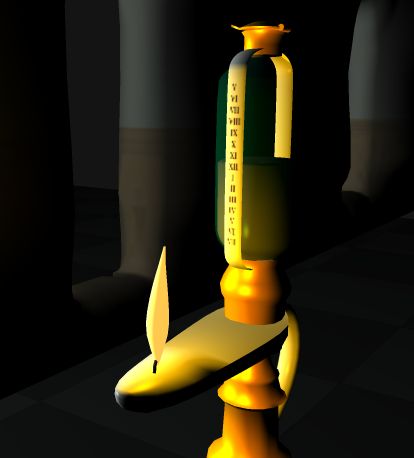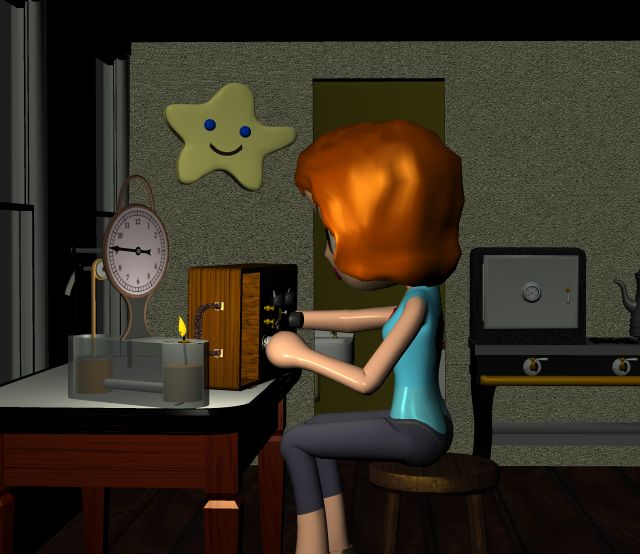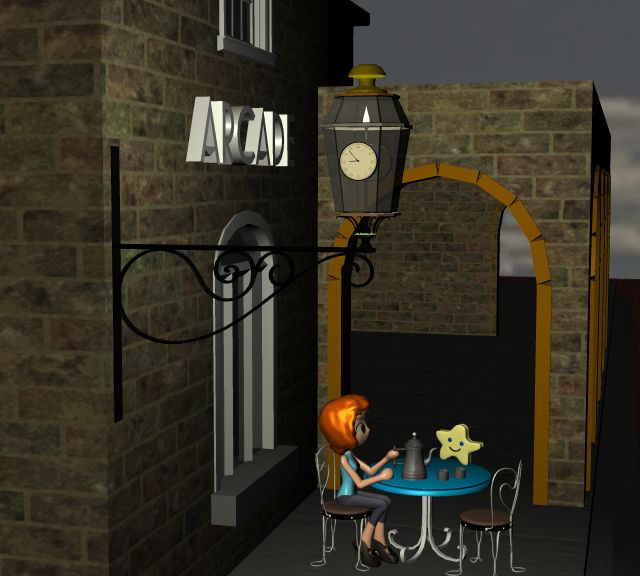Monday, July 13, 2020
Charge of the lightED Breguet
Three ways of mixing light and time. Reviewing two earlier items and adding a third.
= = = = =
First, a meaningful and useful device from the 1600s.
I probably should have built this clock for Third Shift Workers Day, celebrating the graveyard shift. This oil clock was developed in the 1600s as a timer and light for scribes and illuminators working through the night. It provided light for scribal work, and simultaneously measured the shift. When the light went out, time to go home or go to bed. (In other words, it was an illuminator illuminator.)
 Self-calibrating in two ways: The light calibrated and enabled your work, and the flame calibrated the oil flow.
Self-calibrating in two ways: The light calibrated and enabled your work, and the flame calibrated the oil flow.
 This is a patient machine in the same elegant way as the Willson automatic buoy. The fuel does all the work, with no other mechanism needed. As the flame uses up the oil, the level drops through the hours from sunset through sunrise.
= = = = =
Second, a dubious but interesting item from 1819:
This one was never used. Supposedly Monsieur Gabry of Liancourt made one in 1819, but never produced it in quantity.
This is a patient machine in the same elegant way as the Willson automatic buoy. The fuel does all the work, with no other mechanism needed. As the flame uses up the oil, the level drops through the hours from sunset through sunrise.
= = = = =
Second, a dubious but interesting item from 1819:
This one was never used. Supposedly Monsieur Gabry of Liancourt made one in 1819, but never produced it in quantity.
 I've shown a transparent view here. The clock contained two pots connected by a pipe at the bottom. Both were filled with combustible oil. The front pot had a wick extending to the bottom.
I've shown a transparent view here. The clock contained two pots connected by a pipe at the bottom. Both were filled with combustible oil. The front pot had a wick extending to the bottom.
 As the flame consumed the oil in the front pot, the back pot lowered in unison, pulling the float down, and thus turning the dial. When you refilled the front pot, you'd have to rewind the float manually.
The first night clock was elegantly simple and 'patient', with the fuel doing all the work. This one was clunky and overcomplicated, with a lot of unneeded moving parts.
Why all the parts? I suppose Gabry wanted to have a circular dial, which was the standard by then. The magnificent Ridhwan clock had a linear and semi-digital way of consuming the day, and the 1600 scribe clock literally consumed the night, converting it to light.
= = = = =
And now the third mix of light and time. A streetlight that tells the time. This isn't technically interesting, it's just pretty. I felt a duty to generate some beauty.
It's also yet another Breguet product that mixes several of my favorite themes. Ancient clocks, patient machines, acetylene.
As the flame consumed the oil in the front pot, the back pot lowered in unison, pulling the float down, and thus turning the dial. When you refilled the front pot, you'd have to rewind the float manually.
The first night clock was elegantly simple and 'patient', with the fuel doing all the work. This one was clunky and overcomplicated, with a lot of unneeded moving parts.
Why all the parts? I suppose Gabry wanted to have a circular dial, which was the standard by then. The magnificent Ridhwan clock had a linear and semi-digital way of consuming the day, and the 1600 scribe clock literally consumed the night, converting it to light.
= = = = =
And now the third mix of light and time. A streetlight that tells the time. This isn't technically interesting, it's just pretty. I felt a duty to generate some beauty.
It's also yet another Breguet product that mixes several of my favorite themes. Ancient clocks, patient machines, acetylene.
 Since this was made around 1880, I placed Polistra in a vaguely appropriate scene.
= = = = =
Completely irrelevant sidenote: I've been focusing on old French inventions for a long time, and specifically on Breguet products. Unlike most of the names I mention favorably, Breguet is still a living company, still making clocks and watches. It hasn't been turned into a fake Chinese brand like Elgin. Normally a favorable mention of an active company gets "read" by bots working for the company. Despite 8 years of favorable publicity for Breguet, I've never seen a bot from that source "reading" the blog.
Since this was made around 1880, I placed Polistra in a vaguely appropriate scene.
= = = = =
Completely irrelevant sidenote: I've been focusing on old French inventions for a long time, and specifically on Breguet products. Unlike most of the names I mention favorably, Breguet is still a living company, still making clocks and watches. It hasn't been turned into a fake Chinese brand like Elgin. Normally a favorable mention of an active company gets "read" by bots working for the company. Despite 8 years of favorable publicity for Breguet, I've never seen a bot from that source "reading" the blog.
 Self-calibrating in two ways: The light calibrated and enabled your work, and the flame calibrated the oil flow.
Self-calibrating in two ways: The light calibrated and enabled your work, and the flame calibrated the oil flow.
 This is a patient machine in the same elegant way as the Willson automatic buoy. The fuel does all the work, with no other mechanism needed. As the flame uses up the oil, the level drops through the hours from sunset through sunrise.
= = = = =
Second, a dubious but interesting item from 1819:
This one was never used. Supposedly Monsieur Gabry of Liancourt made one in 1819, but never produced it in quantity.
This is a patient machine in the same elegant way as the Willson automatic buoy. The fuel does all the work, with no other mechanism needed. As the flame uses up the oil, the level drops through the hours from sunset through sunrise.
= = = = =
Second, a dubious but interesting item from 1819:
This one was never used. Supposedly Monsieur Gabry of Liancourt made one in 1819, but never produced it in quantity.
 I've shown a transparent view here. The clock contained two pots connected by a pipe at the bottom. Both were filled with combustible oil. The front pot had a wick extending to the bottom.
I've shown a transparent view here. The clock contained two pots connected by a pipe at the bottom. Both were filled with combustible oil. The front pot had a wick extending to the bottom.
 As the flame consumed the oil in the front pot, the back pot lowered in unison, pulling the float down, and thus turning the dial. When you refilled the front pot, you'd have to rewind the float manually.
The first night clock was elegantly simple and 'patient', with the fuel doing all the work. This one was clunky and overcomplicated, with a lot of unneeded moving parts.
Why all the parts? I suppose Gabry wanted to have a circular dial, which was the standard by then. The magnificent Ridhwan clock had a linear and semi-digital way of consuming the day, and the 1600 scribe clock literally consumed the night, converting it to light.
= = = = =
And now the third mix of light and time. A streetlight that tells the time. This isn't technically interesting, it's just pretty. I felt a duty to generate some beauty.
It's also yet another Breguet product that mixes several of my favorite themes. Ancient clocks, patient machines, acetylene.
As the flame consumed the oil in the front pot, the back pot lowered in unison, pulling the float down, and thus turning the dial. When you refilled the front pot, you'd have to rewind the float manually.
The first night clock was elegantly simple and 'patient', with the fuel doing all the work. This one was clunky and overcomplicated, with a lot of unneeded moving parts.
Why all the parts? I suppose Gabry wanted to have a circular dial, which was the standard by then. The magnificent Ridhwan clock had a linear and semi-digital way of consuming the day, and the 1600 scribe clock literally consumed the night, converting it to light.
= = = = =
And now the third mix of light and time. A streetlight that tells the time. This isn't technically interesting, it's just pretty. I felt a duty to generate some beauty.
It's also yet another Breguet product that mixes several of my favorite themes. Ancient clocks, patient machines, acetylene.
 Since this was made around 1880, I placed Polistra in a vaguely appropriate scene.
= = = = =
Completely irrelevant sidenote: I've been focusing on old French inventions for a long time, and specifically on Breguet products. Unlike most of the names I mention favorably, Breguet is still a living company, still making clocks and watches. It hasn't been turned into a fake Chinese brand like Elgin. Normally a favorable mention of an active company gets "read" by bots working for the company. Despite 8 years of favorable publicity for Breguet, I've never seen a bot from that source "reading" the blog.
Since this was made around 1880, I placed Polistra in a vaguely appropriate scene.
= = = = =
Completely irrelevant sidenote: I've been focusing on old French inventions for a long time, and specifically on Breguet products. Unlike most of the names I mention favorably, Breguet is still a living company, still making clocks and watches. It hasn't been turned into a fake Chinese brand like Elgin. Normally a favorable mention of an active company gets "read" by bots working for the company. Despite 8 years of favorable publicity for Breguet, I've never seen a bot from that source "reading" the blog.Labels: defensible times
